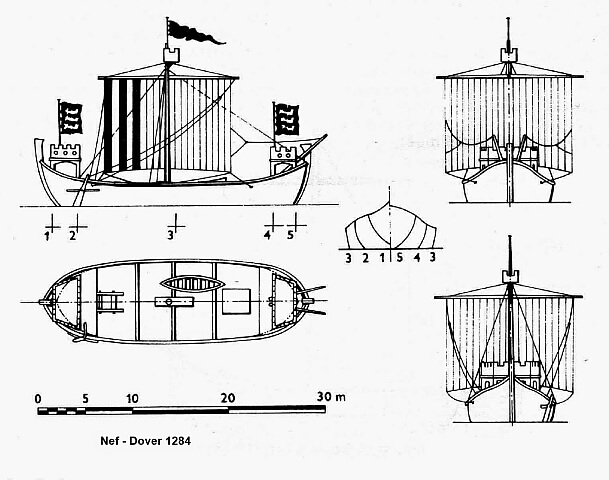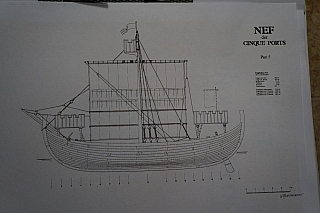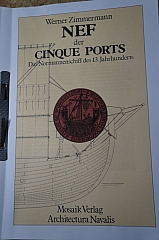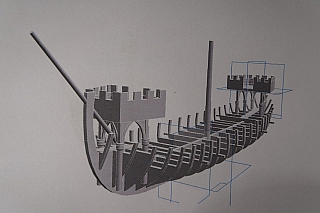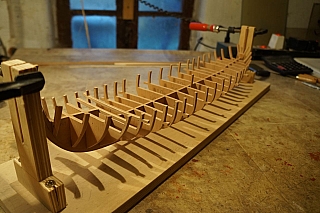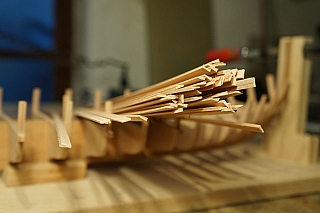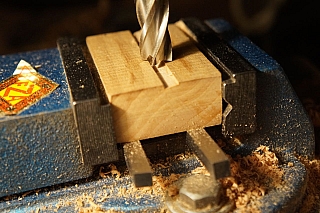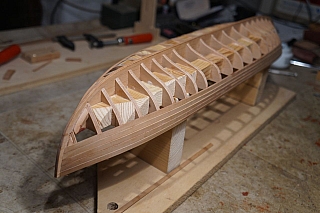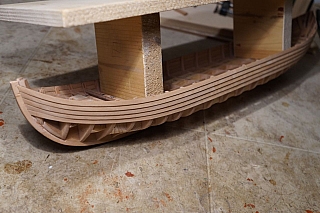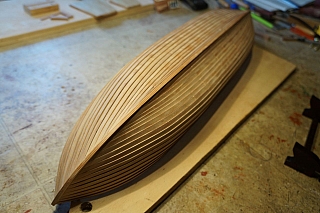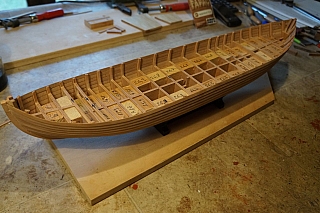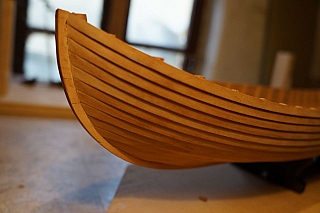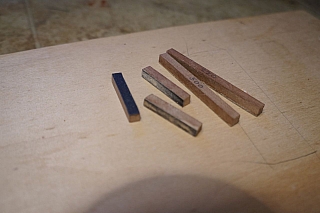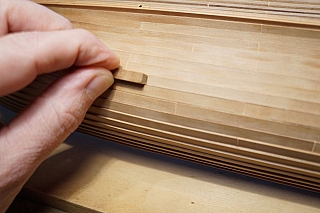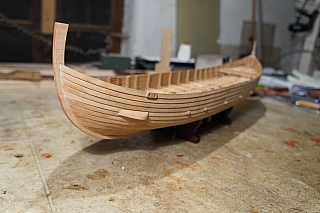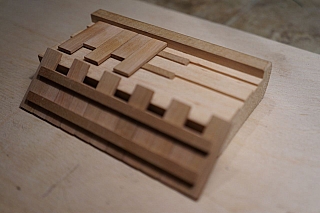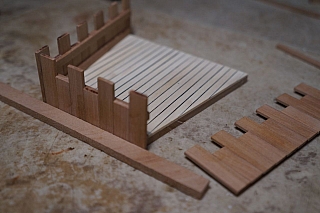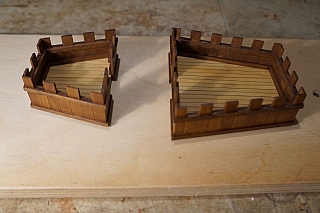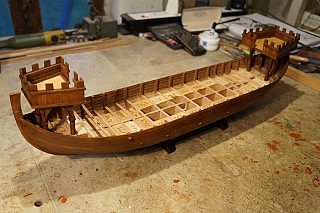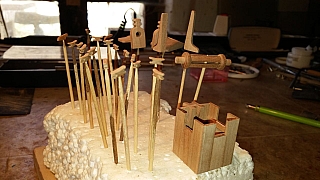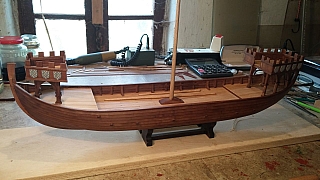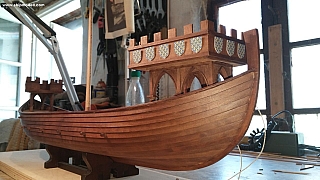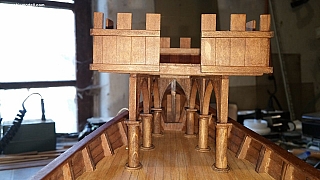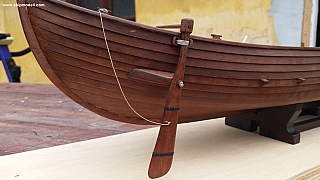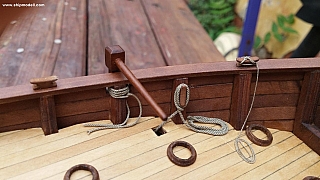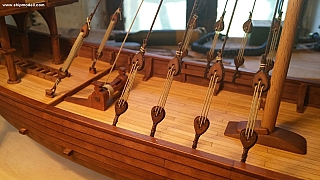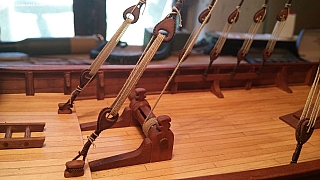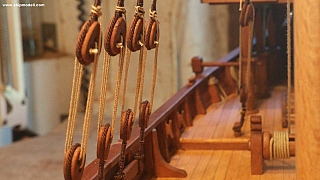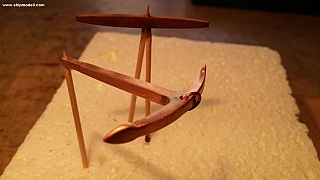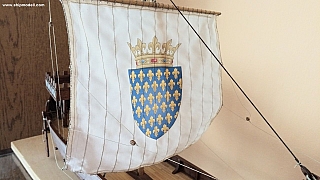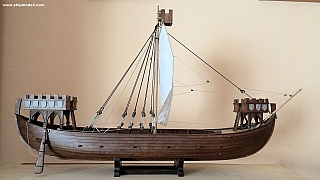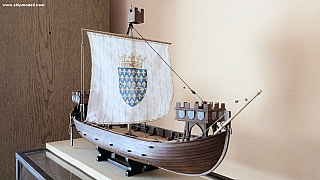⚓ French Nef ⚓
 french carrack - of XIII. century
french carrack - of XIII. century

 The carrack or nef
The carrack or nef
A carrack was a three- or four-masted ocean-going sailing ship developed in 15th century Europe. Carracks were first used for European trade from the Mediterranean to the Baltic. In its most advanced forms it was used by the Portuguese for trade with the African coast and finally with Asia and America.

With linguistic variation, these ships were called carraca or nau in Portuguese, Spanish and Genoese, caraque or nef in French, kraak in Dutch and Flemish. Originally the word carrack meant ship and was used in the Mediterranean for any ship long before the ocean-going carrack was developed in the 15th century. The word probably originally derives from the Arab word Harraqa, a type of river barge that first appeared in the Tigris and Euphrates rivers in the 9th century.
Carracks were carvel built ocean-going ships: large enough to be stable in heavy seas, and roomy enough for a large cargo and the provisions needed for long voyages. They were usually square-rigged on the foremast and mainmast and lateen-rigged on the mizzenmast. They had a high rounded stern with large aftcastle, forecastle and bowsprit at the stem. As the forerunner of the great ships of the age of sail, the carrack was one of the most influential ship designs in history; while ships became more specialized, the basic design remained unchanged throughout this time period A fully rigged medieval sailing merchantman and warship. Developed in France, the nef had a broad beam, rounded ends, and a carvel-planked (flush rather than overlapping) hull. Similar in design and purpose to the cog, this type of ship was normally single masted with a more rounded stern than the cog. Fore and after castles were part of the hull structure. By the fifteenth and sixteenth centuries the vessel had grown to almost 400 tons and carried three masts. Its basic purpose as a naval vessel was to serve as a fighting platform.
 A XIII. századi francia Nef - Szikora László által
A XIII. századi francia Nef - Szikora László által

... Általában nem szoktam több dologba egyszerre belevágni, de valahogy megakadtam a Mordaunt építésével (alkotói válság?). A 2014-es találkozón viszont kaptam Tyrmantól egy könyvet, a Cinque Ports nefjeirõl, mely egy tervrajzot is tartalmazott, és teljesen rábuktam, mivel régóta nézegettem ezeket a bástyás, ácsolt hajókat, és gondoltam összeütök egyet a következõ találkozóra. Persze, az összeütés egy kerek évbe tellett, még az ilyen egyszerûnek kinézõ hajóval is igen sok munka volt, néhány buktatóval tarkítva.
A rajz átlagos, de használható, valamint a könyv sok segítséget ad, bár német nyelvû, az ábrák és néhány szó ismeretével el lehet rajta igazodni. De azért valami érdekességet bele kellett vinnem. Belefutottam az interneten egy francia XIII. századi nef adataiba, mely egy kicsit nagyobb az angol nefnél és megtetszett a rajzocska is róla, a gótikus bástyalábakkal és a francia liliomos díszítésekkel.
Ismét a jó kis tervezõ programomat (Solid Edge) hívtam segítségül, bevittem az eredeti bordarajzokat, mely alapján kialakult a hajótest, átméreteztem egy kicsit, majd megállapítottam az új bordázatot. Természetesen sûrûbbre vettem, hogy könnyebb legyen palánkozásnál az íveket tartani. A bástyákat is átalakítottam a hajó mérete miatt, illetve a gótikus lábazatot is megálmodtam. Annyiból szerencsés a helyzet, hogy ezekrõl igen kevés, az is elég torz, ábrázolás van, tehát ez adott némi szabadságot, olyanra rajzolhattam, ami nekem tetszik...
lásd még a hajomakett.hu oldalon...
